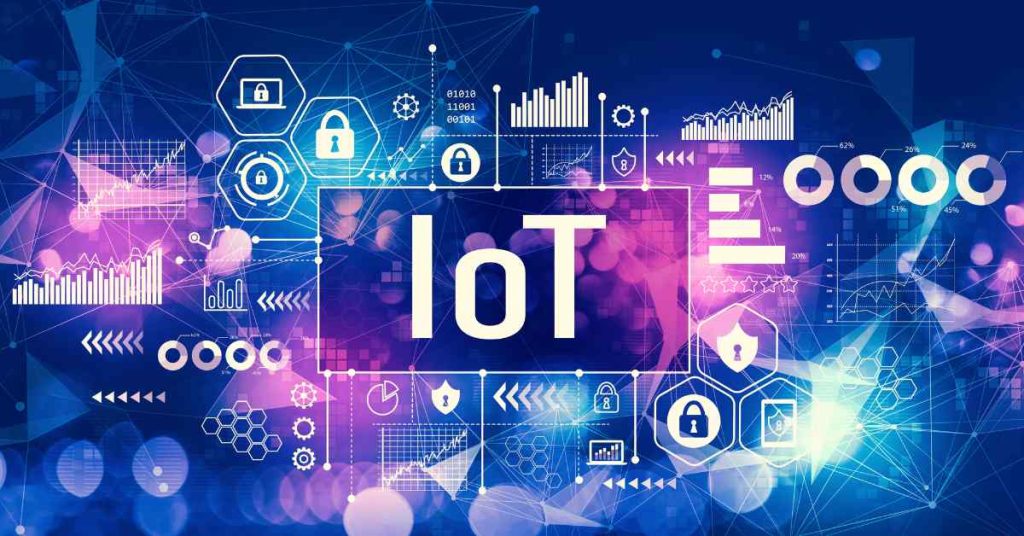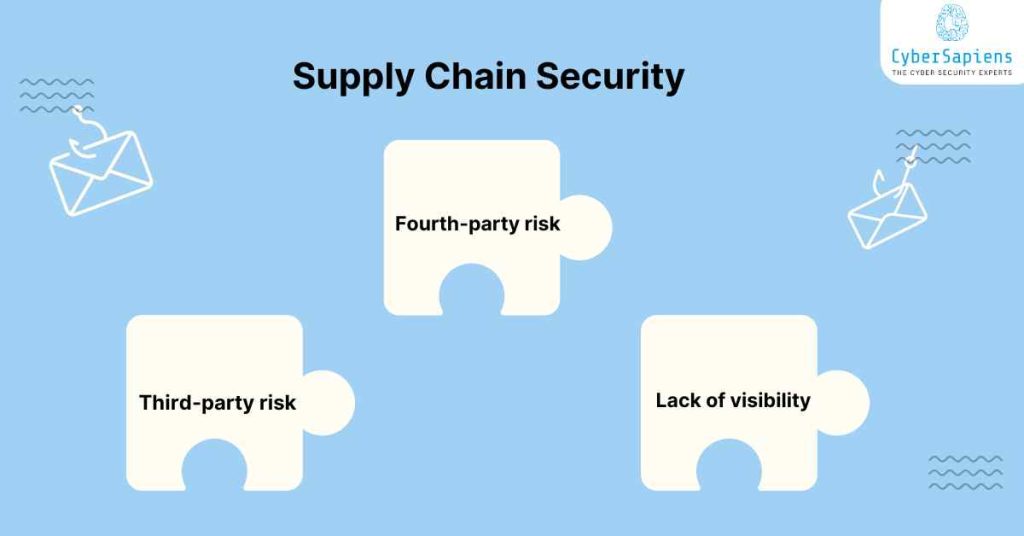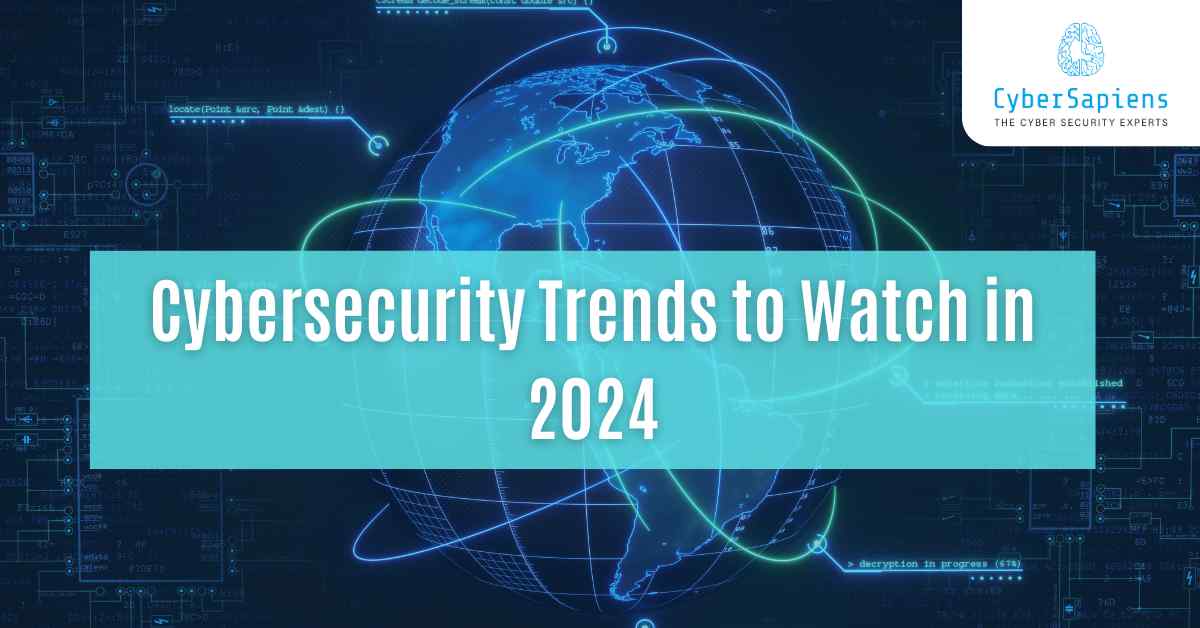With each new year, the threats to organizations’ information security are becoming more sophisticated and widespread. Hackers are getting more and more advanced in their operations and the attacks that they launch are frequent and diverse.
Cybersecurity experts will have to be on their toes and learn new ways of protecting their organizations in the year 2024 from cybercriminals. Here are some of the trends that are expected to shape the field of cybersecurity in the year 2024.
This article is going to be very interesting as we are talking about Cybersecurity Trends to Watch in 2024, hold on to this article and explore each point we have written
Let’s start our first topic with AI-powered attacks;
AI-Powered Attacks: The New Frontier of Cybercrime

In the present world, AI and ML have changed many sectors, and one such sector is the cybersecurity sector. But, these technologies have also posed a great challenge in that they have provided a platform for cybercriminals to conduct their business in a more complex manner. According to Gartner, by 2024, AI-based attacks will increase and it will be hard for security specialists to protect the organization from these threats.
AI-powered attacks can take many forms, including:
1. Deepfakes
Videos, audio, or images that are created by AI to influence people or companies. For instance, a deepfake video can be created to depict and mimic the CEO and get the employees to share confidential information.
2. AI-driven phishing
Phishing attacks done with the help of AI are quite sophisticated as they can employ the help of machine learning to study and mimic the behaviour of the legitimate sender.
3. AI-generated malware
Malware can also be built with the help of AI which makes it very complex and hard to detect by conventional security systems.
Organizations will have to use AI-based security solutions to defend against these attacks since they are AI-based.
Cloud Security: The New Arena

As more organizations shift to the cloud. In 2024, cloud security will be a major concern since criminals will be attacking cloud-based systems more and more.
Cloud security challenges include:
1. Visibility and control
The cloud environments are quite extensive and convoluted and this means that it is hard to identify and address threats.
2. Misconfigured resources
Cloud resources are also sometimes misconfigured and as we have seen can be exploited by an attacker.
3. Data breaches
Data breaches in the cloud environment are catastrophic because the information is made available to people who are not supposed to access it.
Preempting the cloud security threats, the organizations will have to engage the cloud security solutions that can offer real-time monitoring, threat identification and resolution.
Zero-Trust Architecture: Cybersecurity in the Future

Zero-trust architecture is a security approach that takes the stance that no one is to be trusted; this includes employees, partners, and devices within the organisation’s network and those from the outside. By 2024, zero trust architecture will be adopted even more frequently because companies will understand the importance of prevention in cybersecurity.
Zero-trust architecture involves:
1. Multi-factor authentication
Forcing people to give many forms of identification to be able to use the network resources.
2. Micro-segmentation
Dividing an organization’s network into separate compartments to prevent the virus from infecting the entire network.
3. Least privileged access
Reducing the users’ access to information to only the information they need to do their jobs.
This is because a zero trust model minimises the probability of a cyber threat and ensures that valuable data is well guarded.
IoT Security: This Brings About the Issue of Unmanaged Devices Which is Increasing Day by Day

Today’s popular concept of the Internet of Things (IoT) continues to transform various sectors ranging from the medical sector to the production sector. But at the same time, the number of IoT devices has become a serious problem because many of them are uncontrolled and are open to attack.
According to Kaspersky, the focus of threats in 2024 will be on IoT security as the attackers will use these devices to stage an attack against an organization.
IoT security challenges include:
1. Unmanaged devices
As will be seen many IoT devices are unmanaged or unmonitored making them susceptible to an attack
2. Default passwords
Shockingly, most IoT devices are shipped with default passwords that can; easily be cracked by hackers.
3. Lack of security updates
IoT devices do not get security updates as often, hence most of them are exposed to these common susceptibilities.
Orgs will be required to put in place Security solutions for IoT that will include real-time security projection, automatic threat identification and mitigation.
Passwordless Authentication

Passwordless authentication is a security method that does not allow passwords in their conventional or standard forms. Passwordless authentication is expected to grow even more in 2024 because organizations will understand the importance of stronger and more convenient authentication.
Passwordless authentication involves:
1. Biometric authentication
Implementing the use of unique digits for instance fingerprints and the face recognition system.
2. Behavioural authentication
Using patterns like typing or the usage of a particular device as a means of approving the user.
3. Token-based authentication
Applying tokens, for example, smart cards or single-use passwords as the means of identification.
Thus, using the passwordless approach organizations can minimize potential phishing threats and attacks that involve passwords.
Cybersecurity Skills Gap

Hiring has been an issue that affects the cybersecurity industry and is characterized by a skills gap. Finally, in 2024 the shortage of talent will rise to a new level due to the expectation of the growing need for skilled cybersecurity employees.
To combat the cybersecurity skills gap, organizations will need to invest in: To combat the cybersecurity skills gap, organizations will need to invest in:
1. Cybersecurity training programs
Strengthening human security through equipping the employees with capabilities and knowledge that will enable them to handle emerging.
2. Automation and AI
Using supplementing, automation, and AI to enhance current security personnel and teams.
3. Managed security service providers
Collaborate with the managed security service providers for the improvement of the existing internal security infrastructure.
Supply Chain Security

Another important issue that remains unnoticed is that of supply chain security. In 2024, the concept of supply chain security will receive worthy attention all over the world, because the threat of third and fourth parties was finally understood.
Supply chain security challenges include:
1. Third-party risk
In this case, the third-party vendors are a source of vulnerability since they offer an indirect way of entering into an organization’s network.
2. Fourth-party risk
Other third parties, specifically fourth-party risks that may include contractors or suppliers, may also constitute a huge threat.
3. Lack of visibility
Procurement departments especially suffer from that problem because various internal actors can significantly affect an organization’s supply chain with little oversight.
Supply chain security threats are only expected to grow in the future; therefore, organizations will need to leverage effective solutions that offer supply chain security intelligence and evaluation functions.
Quantum Computing: The Next-Generation Threats in Cybersecurity

Quantum computing is quickly becoming a rising field of computational technology that can transform several different fields. Nevertheless, on the negative side, quantum computing also presents an enormous threat in the aspect of security because it has the potential to unmake conventional encryption formulas.
In 2024 organizations will need to begin planning for the quantum shift and ascertain how it will affect things such as cyber security. This includes:
1. Post-quantum cryptography
Design and deployment of advanced cryptography post-quantum that cannot be penetrated by a quantum assault.
2. Quantum-resistant protocols
Proceed with the problems of using quantum-resistant approaches when it is necessary to transmit classified information.
3. Education and awareness
Creating awareness of the employees, and other stakeholders of the risks that come with quantum computing.
Conclusion
In conclusion, 2024 will be a significant year for cybersecurity since new trends and threats will present themselves that organizations must prepare to face. Thus, organizations can keep up with the trends and prevent the threats that continue to pose a risk to confidential data.
FAQs: Cybersecurity Trends to Watch in 2024
1. What is the top cybersecurity trend for 2024?
Ans: The top cybersecurity trend for 2024 is the increased use of Artificial Intelligence (AI) and Machine Learning (ML) to enhance cybersecurity defences and improve threat detection.
2. What is the biggest cybersecurity threat facing organizations in 2024?
Ans: The biggest cybersecurity threat facing organizations in 2024 is the growing threat of IoT security breaches, as more devices become connected to the internet and vulnerable to attacks.
3. What is Passwordless Authentication, and why is it becoming popular?
Ans: Passwordless Authentication is a security approach that eliminates the need for traditional passwords. It’s becoming popular because it provides a more secure and convenient way to authenticate users, reducing the risk of phishing attacks and password-related breaches.
4. What is the Cybersecurity Skills Gap, and how can it be addressed?
Ans: The Cybersecurity Skills Gap refers to the shortage of skilled cybersecurity professionals. It can be addressed by investing in cybersecurity training programs, leveraging automation and AI, and partnering with Managed Security Service Providers (MSSPs).
5. What is Supply Chain Security, and why is it important?
Ans: Supply Chain Security refers to the practice of managing and mitigating cybersecurity risks within an organization’s supply chain. It’s important because third-party and fourth-party vendors can provide a backdoor into an organization’s network, making supply chain security a critical concern.
6. What is Quantum Computing, and how does it impact cybersecurity?
Ans: Quantum Computing is a rapidly emerging technology that has the potential to break traditional encryption algorithms. It impacts cybersecurity because it requires organizations to develop and implement post-quantum cryptographic algorithms and quantum-resistant protocols to protect sensitive information.
7. What is the significance of Cybersecurity Regulation in 2024?
Ans: Cybersecurity Regulation is becoming increasingly important in 2024, as governments and regulatory bodies recognize the need for stronger cybersecurity standards. Organizations must prioritize compliance with emerging regulations, such as GDPR and CCPA, to avoid significant penalties.
8. Why is Cybersecurity Awareness important for employees?
Ans: Cybersecurity Awareness is important for employees because they are often the weakest link in an organization’s security defences. Educating employees about cybersecurity best practices can help prevent phishing, social engineering, and other cyber threats.
9. How can organizations stay ahead of emerging cybersecurity trends and threats?
Ans: Organizations can stay ahead of emerging cybersecurity trends and threats by investing in threat intelligence, implementing robust security solutions, and staying informed about the latest cybersecurity news and developments.
10. What is the future of Cybersecurity in 2024 and beyond?
Ans: The future of Cybersecurity in 2024 and beyond is a rapidly evolving landscape, with emerging trends and threats requiring organizations to adapt and evolve their security strategies. By prioritizing cybersecurity, organizations can protect their sensitive information and stay ahead of emerging threats.












